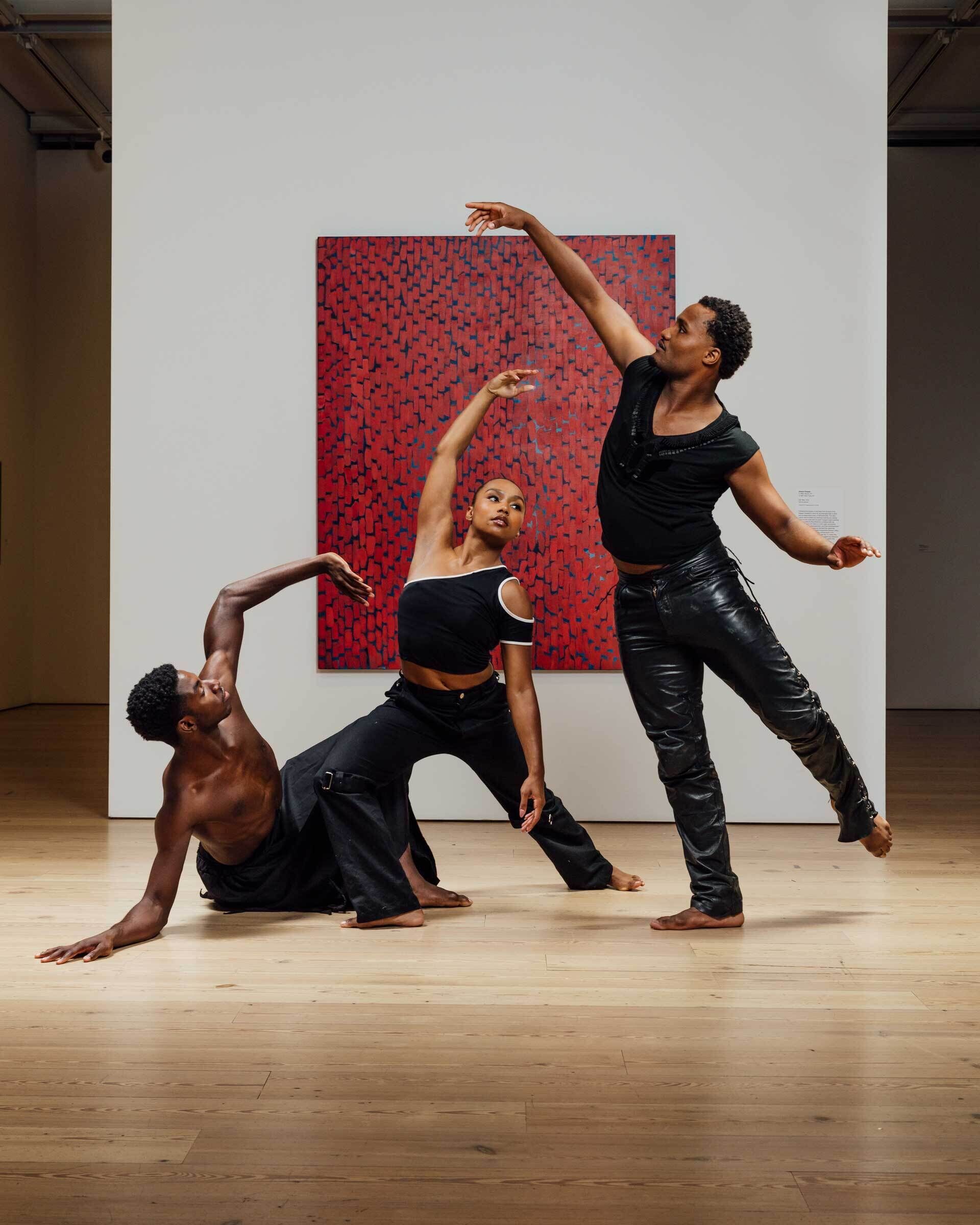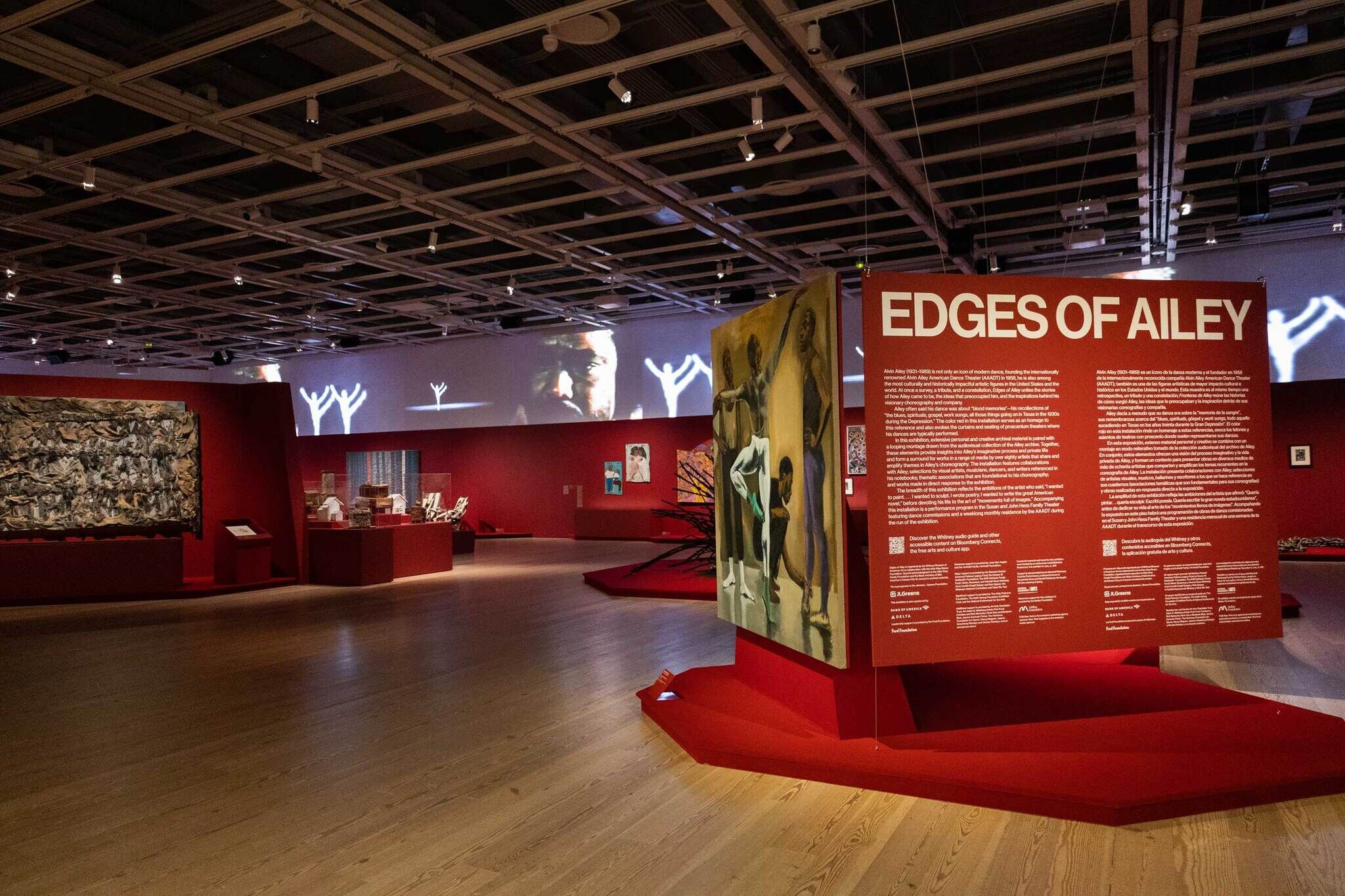Minisode: exhibition curator Adrienne Edwards on Edges of Ailey
Sept 18, 2024
0:00
Minisode: exhibition curator Adrienne Edwards on Edges of Ailey
0:00
Narrator:
Welcome to Artists Among Us Minisodes from the Whitney Museum of American Art, Alvin Ailey edition. We will be exploring the new Edges of Ailey exhibition or, as curator Adrienne Edwards calls it, “extravaganza,” dedicated to the life, dances, and enduring legacy of the artist and choreographer Alvin Ailey. The exhibition will be on view at the Whitney from September 25–February 9.
Through an immersive eighteen-screen video installation, illuminating archival materials, an ambitious performance program, and wide-ranging artworks by eighty-two visual artists, the exhibition explores a titan of modern dance whose impact reverberates across media and time, and whose beloved company, Alvin Ailey American Dance Theater, remains a global cultural force to this day.
In this minisode, Edwards takes us through her impetus and vision for the show and some of the discoveries she made along the way.
Adrienne Edwards:
Well, the show really came out of a kind of long-standing sort of trajectory in recent years. There have been so many museums that have done exhibitions about dance. And it occurred to me on multiple occasions, why not Alvin Ailey? There couldn't be a, I think, more international brand in terms of contemporary dance. And so I was really sort of asking that question of our field and also of our institutions.
Alvin Ailey was born in Rogers, Texas in 1931, and dies from AIDS-related complications in 1989. He is among the most important cultural figures, not only in the United States, but abroad. And he had a vision for dance that was incredibly modern, incredibly rigorous, incredibly imaginative, and it was about freedom, it was about love, and it was about excellence.
Ailey comes to New York in 1954, and like so many dancers did at the time, really made his living doing Broadway shows, and then uses these resources to gather a group of dancers to present his very first work that would become known as part of the Ailey Company in 1958 called Blues Suite. It's interesting because I've been going to see Ailey for so long, I feel like I'm actually hardwired with Ailey in a way that I can't actually remember the very first performance that I saw. So it was something I was very familiar with, and I actually thought maybe I was even too close to Ailey to get enough of a sort of perspective on how to think rigorously and critically about the work and who he was. But that all changed once I got into the archive.
Ailey was a copious keeper of journals and diaries, and they include everything from to-do lists to character studies for roles in his dances. What we found that was really surprising is his own short story writing, his own poetry. He also wrote things like “No Leg Warmers,” wonderful notes to his lovers reflecting on their positive and negative qualities. And then you would find just almost things that seemed very positive, like he was reassuring himself. One said, “We teach people to feel, to own their own feelings.” So we could see him unfold as a creative person. And it was just an incredible discovery for me as a curator and a scholar to have access to that.
The other thing is that we found almost 200 videos made during his lifetime alone. And then the question became, how do we present this to audiences? And there are many different approaches, but Mr. Ailey was always about spectacle, loved theatricality, knew that we didn't have the right to bore people just because we might have talent or knowledge. So in putting the show together, we've kept really close to Mr. Ailey and the things that he believed in. And he said, you know, I wanted to be a painter. I wanted to be a sculptor. I wanted to write the great American novel. I wanted to be a poet. And that, to summarize, dance somehow could hold all of those things for him.
I've been working with two wonderful filmmakers, Josh Begley and Kaya Liu to basically create a montage across eighteen screens in the gallery that will take you through a kind of arc and evolution of his life by focusing very specifically on key dances and the historical, political, and social context and cultural context that is occurring while he is making them.
And then there are eighty-two other artists in addition to Mr. Ailey who are in the show, some represented by multiple works. The earliest is from 1851 and the most recent are made especially on the occasion of the exhibition, so have been made this year. The ideas in Mr. Ailey's dances—which these artists share although they realize them in different ways—traverse the Black body in dance. Like, what is Blackness in dance? So many artists have made works representing this. But also a kind of Southern imaginary, the South for Ailey and those who preceded him was not only about the Southern United States, but was also very much about what is a Black diaspora. The Caribbean, South America, in particular Brazil for Ailey, but also the western coast of Africa.
So it's almost like a kind of circum-Atlantic history in a way. Southern imaginary also looks at Black spirituality, which is, of course, about a kind of Southern Baptist church or a kind of evangelism within the Black tradition. But it is also equally about Haitian voodoo. It is about Brazilian Candomblé. It is about the way those practices originate in different cultures on the west coast of Africa. So this idea of spirituality as the sustaining force, as a way of speaking to struggles and challenges and also desires is an incredibly important subject. Then there is this question of movement. And when I say movement, I mean like the movement of a people. So we think about ideas about Black migration, which include the Middle Passage from the West Coast of Africa to the Americas, but also even within the United States, thinking about the Great Migration, not only what were the sets of conditions that led to it, but also the unknown of what life elsewhere would be.
I mean Mr. Ailey himself, who was born in Rogers, Texas in 1931, goes with his mother in the early forties to Los Angeles, leaves Los Angeles, goes to San Francisco for a while, leaves San Francisco and ultimately comes to New York. And so he himself exemplifies this sort of migratory pattern that really became about directing us towards possibilities.
And I feel that that's something that Ailey thought a lot about. And then, of course, the openness of what is possible leads us to then demand our own liberation. And so for Ailey, this idea of freedom and how the body becomes the vehicle through dance in which to express that freedom, practice that freedom, embody that freedom, it's really very important to so many other artists. And that freedom is, you know, about a kind of Black liberation. But that Black liberation is also about a Black queer liberation. It is about the sort of acknowledgment of the complexity of who he was as a person. And so there are all of these ways in which there's a sort of sinew, obvious or not, between Ailey and these various artists in the show.
Everyone has an Ailey story, but I think I was surprised by the extent to which so many contemporary artists not only knew who he was, but really had thought about what he achieved and what he stood for. But artists are fundamentally curious people. And for that reason, much like Ailey himself, their interests are broad and deep and incredibly multilayered. And so I think that what became clear to me is that they really saw him as someone who exemplified excellence. I mean, a lot of the conversations were about, wow, can you imagine what it was like to achieve what he did in his lifetime? Like it's not today, we're talking about 1958 at a time where there was one place in New York City where the dance studios were integrated, where you could go to study at the New Dance Group. That's really quite something to contend with because we think about these aspects of American culture and life and politics as being really relegated to the American South when in fact it was throughout this country. And if you look at Ailey dancing, there's something so visceral and vital about the way that he held a stage. And I think that that kind of like insistence on telling his own story, but making it a kind of universal story, if you will, I think was quite an achievement on his part. And I think it's a big part of his legacy and part of the reason that it continues to be so exemplary.
Narrator:
Artists Among Us Edges of Ailey Minisodes are produced by SandenWolff with the Whitney Museum of American Art: Anne Byrd, Nora Gomez-Strauss, Kyla Mathis-Angress, Emma Quaytman, and Emily Stoller-Patterson.
In Edges of Ailey.
Through an immersive eighteen-screen video installation, illuminating archival materials, an ambitious performance program, and wide-ranging artworks by eighty-two visual artists, Edges of Ailey explores a titan of modern dance whose impact reverberates across media and time, and whose beloved company, Alvin Ailey American Dance Theater, remains a global cultural force to this day. In this minisode, the curator of the exhibition takes us through her vision for the show and some of the discoveries she made along the way.


